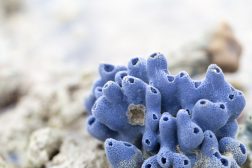Definition
noun, plural: cryptomonads
Any of the species belonging to Phylum Cryptophyta, and characterized by being aquatic (found mostly in freshwater), flattened in shape, approximately 10-50 μm in cell size, and possessing two, slightly unequal flagella, an anterior groove, and plastids, such as chloroplasts with pigments chlorophyll a and c and phycobilins
Supplement
Cryptomonads are algal species of the Phylum Cryptophyta (Cavalier-Smith, 1986).1 They are aquatic and are commonly found in freshwater. They also occur in marine and brackish water.
The distinctive morphologic features of Cryptomonads include a cell size of approximately 10 to 50 μm, having a flattened shape, having two, slightly unequal flagella, and the presence of an anterior groove. Many of them have plastids, e.g. chloroplasts. However, there are cryptomonads that lack chloroplasts, e.g. Chilomonas sp. and Goniomonas sp.. When chloroplasts are present, the pigments present are chlorophylls a and c. There are also other pigments, such as phycobilins.
Cryptomonads also have extrusomes, which are membrane-bound structures wherein the contents are discharged to the outside of the cell. In Cryptomonads, the extrusomes are particularly called ejectosomes. These ejectosomes contain two connected spiral ribbons that when under stress (chemical, mechanical, or light stress) the contents are discharged, propelling the cell in a zigzag manner away from the source of stress.1
Scientific classification:
- Domain: Eukaryota
- Phylum: Cryptophyta (Cavalier-Smith, 1986)
- Class: Cryptophyceae (West in West & Fritsch, 1927)
Other common name(s):
Synonym(s):
See also:
Reference(s):
1 Cryptomonad. Retrieved from ://en.wikipedia.org/wiki/Cryptomonad.







